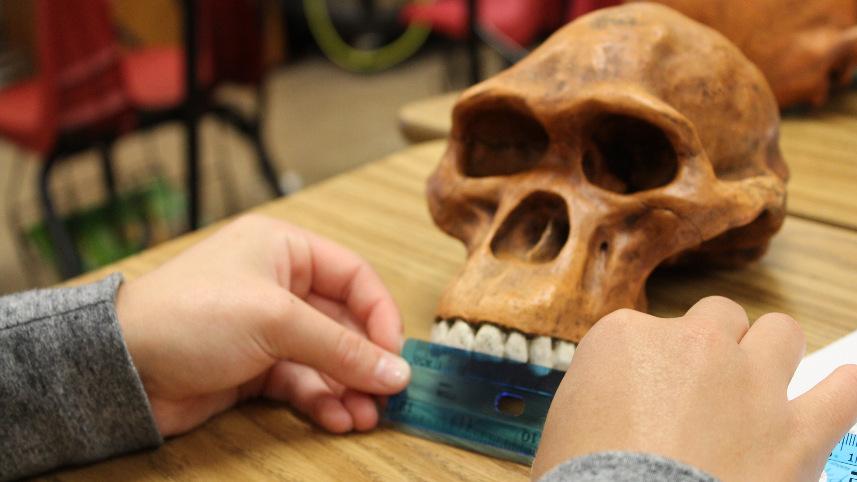Mechanisms of Evolution
- Biological evolution results from changes over time in the genetic constitution of species. Genetic changes often, but not always, produce noticeable changes in the appearance or behavior of organisms. Evolution requires both the production of variation and the spread of some variants that replace others.
- Genetic variation arises through two processes, mutation and recombination. Mutation occurs when DNA is imperfectly copied during replication, leading to a difference between a parent’s gene and that of its offspring. Some mutations affect only one bit in the DNA; others produce rearrangements of large blocks of DNA.
- Recombination occurs when genes from two parents are shuffled to produce an offspring, as happens regularly in sexual reproduction. Usually the two parents belong to the same species, but sometimes (especially in bacteria) genes move between more distantly related organisms.
- The fate of any particular genetic variant depends on two processes, drift and selection. Drift refers to random fluctuations in gene frequency, and its effects are usually seen at the level of DNA. Ten flips of a coin do not always produce exactly five heads and five tails; drift refers to the same statistical issue applied to the transmission of genetic variants across generations.
- The principle of natural selection was discovered by Charles Darwin (1809-1882), and it is the process by which organisms become adapted to their environments. Selection occurs when some individual organisms have genes that encode physical or behavioral features that allow them to better harvest resources, avoid predators, and such relative to other individuals that do not carry the same genes. The individuals that have these useful features will tend to leave more offspring than other individuals, so the responsible genes will become more common over time, leading the population as a whole to become better adapted.
- The process that many people find most confusing about evolution is speciation, which is not a separate mechanism at all, but rather a consequence of the preceding mechanisms played out in time and space. Speciation occurs when a population changes sufficiently over time that it becomes convenient to refer to the early and late forms by different names. Speciation also occurs when one population splits into two distinct forms that can no longer interbreed. Reproductive isolation does not generally happen in one generation; it may require many thousands of generations when, for example, one part of a population becomes geographically separated from the rest and adapts to a new environment. Given time, it is inevitable that two populations that live apart will diverge by mutation, drift, and selection until eventually their genes are no longer compatible for successful reproduction.
Evidence for Evolution, and its Significance in our Lives:
It is impossible to review all the evidence for evolution in a short article such as this. However, the following offers a sample of the kinds of evidence that have been discovered and confirmed repeatedly by scientists. These examples also illustrate the importance of this evidence for science and society more generally.
- Evidence from fossils. Based on myriad similarities and differences between living species, evolutionary biology makes predictions about the features of ancestral forms. For example, numerous features indicate that birds are derived from reptilian ancestors. By contrast, these data reject the possibility that birds were derived from other groups, such as flying insects. Scientists have discovered fossil birds with feathers and legs like modern birds, but which also have teeth, clawed digits on their forelimbs, and a tailbone like their reptilian ancestors. Fossils are especially important evidence for evolution because, with little effort, each of us can use our eyes and minds to observe and interpret the dinosaur and other ancient fossils in public museums.
- Evidence from genetics. The genomes of all organisms contain overwhelming evidence for evolution. All living species share the same basic mechanism of heredity using DNA (or RNA in some viruses) to encode genes that are passed from parent to offspring, and which are transcribed and translated into proteins during each organism’s life. Using DNA sequences, biologists quantify the genetic similarities and differences among species, in order to determine which species are more closely related to one another and which are more distantly related. In doing so, biologists use essentially the same evidence and logic used to determine paternity in lawsuits. The pattern of genetic relatedness between all species indicates a branching tree that implies divergence from a common ancestor. Within this tree of life, there are also occasional reticulations where two branches fuse, rather than separate. (For example, mitochondria are organelles found in the cells of plants and animals. Mitochondria have their own genes, which are more similar to genes in bacteria than to genes on the chromosomes in the cell nucleus. Thus, one of our distant ancestors arose from a symbiosis of two different cell types.) The genetic similarity between species, which exists by virtue of evolution from the same ancestral form, is an essential fact that underlies biomedical research. This similarity allows us to begin to understand the effects of our own genes by conducting research on genes from other species. For example, genes that control the process of DNA repair in bacteria, flies, and mice have been discovered to influence certain cancers in humans. These findings also suggest strategies for intervention that can be explored in other species before testing on humans.
- Evolution in action. Evolutionary change continues to this day, and it will proceed so long as life itself exists. In recent years, many bacterial pathogens have evolved resistance to antibiotics used to cure infections, thereby requiring the development of new and more costly treatments. In some frightening cases, bacteria have evolved resistance to every available antibiotic, so there is no longer any effective treatment. In the case of HIV, which causes AIDS, significant viral evolution occurs within the course of infection of a single patient, and this rapid evolution enables the virus to evade the immune system. Many agricultural pests have evolved resistance to chemicals that farmers have used for only a few decades. As we work to control diseases and pests, the responsible organisms have been evolving to escape our controls. Moreover, scientists can perform experiments to study evolution in real time, just as experiments are used to observe dynamic processes in physics, chemistry, and other branches of biology. To study evolution in action, scientists use organisms like bacteria and fruit flies that reproduce quickly, so they can see changes that require many generations.
Conclusions
Evolutionary biology is a strong and vigorous field of science. A theoretical framework that encompasses several basic mechanisms is consistent with the patterns seen in nature; and there is abundant evidence demonstrating the action of these mechanisms as well as their contributions to nature. Hence, evolution is both a theory and a set of established facts that the theory explains.
Like every other science, there is scientific debate about some aspects of evolution, but none of these debates appear likely to shake the foundations of this field. There exists no other scientific explanation that can account for all the patterns in nature, only non-scientific explanations that require a miraculous force, like a creator. Such super-natural explanations lie outside of science, which can neither prove nor disprove miracles. Science provides us with a compelling account and explanation of the changing life on Earth. It should also remind us of our good fortune to have come into being and our great responsibility to ensure the continuity of life.
Originally published on ActionBioscience and republished by permission of the American Institute of Biological Sciences.
© 2000, American Institute of Biological Sciences. Educators have permission to reprint articles for classroom use.



